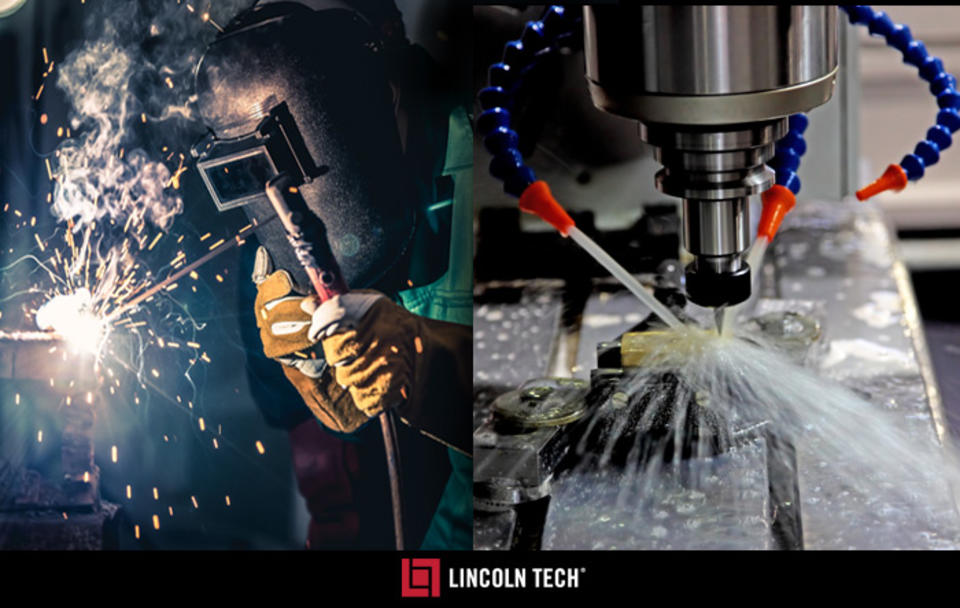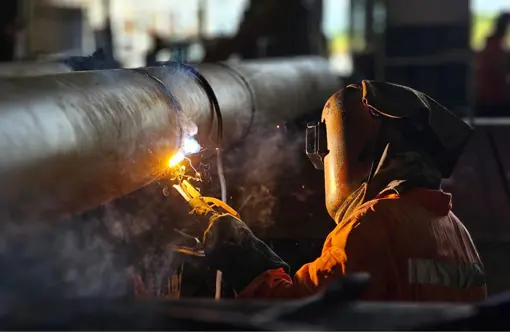Usual Welding Fixing Issues and How to Address Them Successfully
Welding repair services often run into a variety of problems that can jeopardize the honesty of the end product. Typical issues include inadequate infiltration, porosity, and misalignment, among others. Each problem provides special difficulties that require specific techniques for resolution. Recognizing these issues is crucial for welders aiming to improve their results and abilities. This discussion will explore these usual welding repair work concerns and effective techniques to resolve them.
Poor Penetration
Poor infiltration happens when the weld steel stops working to totally fuse with the base product, causing weak joints and prospective structural failings. This issue frequently comes from inadequate heat input, inaccurate electrode angle, or incorrect welding rate. Welders may run into insufficient infiltration as a result of a mistake of the needed criteria for a particular product thickness or kind. Additionally, contamination on the base product's surface area can hinder effective bonding, intensifying the problem. To address inadequate infiltration, welders need to guarantee suitable setups on their tools and maintain a clean job surface. Routine evaluation of welds is advised to recognize any kind of shortages early, permitting for prompt corrections and the avoidance of jeopardized structural stability in welded settings up.
Porosity
Porosity is a common issue in bonded joints that manifests as little gas bubbles caught within the weld metal. This problem can compromise the stability of the weld, causing lowered stamina and possible failing under stress and anxiety. Belgrade. Porosity generally occurs from contamination, dampness, or inappropriate welding techniques, which permit gases to escape into the liquified weld pool. To resolve porosity, welders ought to ensure proper surface preparation, maintain a tidy workplace, and utilize suitable welding parameters. Additionally, picking the appropriate filler product and securing gas can alleviate gas entrapment. Routine assessment and testing of welds can assist identify porosity early, assuring timely rehabilitative activities are taken, consequently protecting the quality and integrity of the welded framework
Misalignment
Misalignment in welding can emerge from different factors, consisting of incorrect configuration and thermal development. Understanding the origin is essential for efficient resolution. Several correction strategies are readily available to realign components and guarantee architectural stability.
Reasons for Imbalance
Welding misalignment typically stems from a variety of underlying concerns that can endanger architectural honesty. One primary cause is inappropriate fit-up of components prior to welding, which can bring about gaps and irregular surfaces. Variants in thermal expansion throughout the welding process can also cause distortion, particularly if the products being signed up with have various coefficients of expansion. Additionally, insufficient fixturing and clamping may fail to hold elements firmly in position, leading to movement during welding. Inadequately maintained devices, including welding makers and devices, may present incongruities in the weld bead, additional adding to misalignment. Lastly, operator error, originating from not enough training or experience, can likewise play a considerable duty in developing misaligned welds.
Improvement Techniques Available
Attending to misalignment properly needs a mix of rehabilitative methods tailored to the specific concerns at hand. One typical approach is the usage of jigs or components to hold parts in the appropriate setting during welding, making certain consistent positioning. Furthermore, pre-heating the products can assist reduce distortion and enhance fit-up. For significant imbalance, mechanical realignment methods, such as using hydraulic jacks or clamps, can be used to deal with the setting prior to welding. Post-weld warm treatment might additionally be needed to eliminate stresses triggered by misalignment. Cautious examination and change throughout the arrangement stage can protect against misalignment problems from ending up being considerable troubles, advertising a smoother welding process and enhancing total architectural integrity.
Distortion
Distortion is a common obstacle in welding that can arise from different aspects, including irregular home heating and cooling. Recognizing the sources of distortion is necessary for executing effective prevention strategies. Resolving this problem not just improves architectural stability but also boosts the overall top quality of the weld.
Sources of Distortion
When subjected to the extreme warmth of welding, materials typically undergo changes that can lead to distortion. This sensation mainly develops from thermal development and tightening during the welding procedure. As the weld location warms up, the product broadens; upon air conditioning, it gets, which can develop inner tensions. On top of that, irregular home heating throughout a work surface can worsen these anxieties, resulting in warping or bending. The kind of product also plays a substantial function; metals with varying thermal conductivity and coefficients of growth may respond differently, bring about unforeseeable distortions. Inadequate joint design and insufficient fixturing can add to misalignment throughout welding, enhancing the possibility of distortion. Understanding these reasons is crucial for reliable welding repair service and avoidance methods.
Avoidance Techniques
Efficient prevention techniques for distortion during welding emphasis on managing warmth input and guaranteeing correct joint layout. Keeping a constant warm input assists to decrease thermal growth and contraction, which can cause distortion. Making use of strategies such as pre-heating the work surface can likewise decrease the temperature slope, advertising consistent heating. Furthermore, choosing ideal joint layouts, such as T-joints or lap joints, can enhance stability and lower tension focus. Implementing appropriate fixturing to safeguard the work surfaces in area further aids in maintaining alignment during the welding procedure. Lastly, staggered welding sequences can distribute warmth more equally, preventing localized distortion. By using these techniques, welders can considerably decrease the probability of distortion and boost the overall quality of their welds.
Splitting
Splitting is a typical issue experienced in welding repairs, usually arising from numerous factors such as incorrect air conditioning prices, material selection, or inadequate joint preparation. The event of splits can considerably jeopardize the honesty of the weld, leading to prospective failings throughout procedure. To resolve this concern, welders need to initially analyze the origin, ensuring that products are compatible and properly selected for the specific application. Additionally, managing the cooling rate during the welding process is vital; fast cooling can induce tension and lead to breaking. Correct joint style and preparation also add to minimizing the threat. Applying these methods can improve weld high quality and resilience, eventually reducing the likelihood of splitting in finished weldments.

Incomplete Fusion
A significant problem in welding repair work is insufficient fusion, which takes place when the weld steel does not appropriately bond with the base product or previous weld passes - Welding. This problem can lead to weak points in the joint, potentially jeopardizing the stability of the welded framework. Factors adding to insufficient combination consist of insufficient warm input, incorrect welding technique, and contamination of the surface areas being signed up with. To address this click to read concern efficiently, welders ought to guarantee appropriate pre-weld cleansing and surface area preparation, in addition to adjust their welding criteria to attain appropriate infiltration and fusion. Routine inspection during the welding procedure can also help recognize insufficient fusion early, permitting prompt restorative steps to boost the general top quality of the weld
Overheating
While welding fixings can boost architectural honesty, overheating provides a significant difficulty that can lead to product destruction. Extreme heat throughout welding can modify the mechanical buildings of metals, resulting in lowered toughness, raised brittleness, and warping. This phenomenon is specifically critical in high-stress applications where architectural reliability pop over to this site is critical. Recognizing getting too hot can involve aesthetic inspections for staining or distortion, in addition to keeping an eye on temperature during the welding process. To mitigate the risks connected with getting too hot, welders need to use appropriate strategies, such as regulating warmth input, changing traveling speed, and utilizing suitable filler materials. Additionally, implementing pre- and post-weld warmth therapies can aid bring back product buildings and enhance the total quality of the repair work, making sure long-lasting performance and security.
Often Asked Inquiries
What Are the Usual Signs of a Welding Issue?

Exactly How Can I Test My Welds for Quality?
To test welds for top quality, one can utilize visual examinations, ultrasonic screening, and radiographic approaches. Each method ensures structural honesty, determines flaws, and validates adherence to defined requirements, eventually boosting the reliability of the welded joints.
What Safety and security Safety Measures Should I Take While Welding?
When welding, one ought to focus on safety by using appropriate personal protective devices, making certain correct ventilation, protecting flammable products away, preserving a tidy work space, and being mindful of environments to avoid injuries and accidents.
Can I Fix a Weld Without Redesigning the Entire Joint?
Repairing a weld without remodeling the entire joint is feasible, depending on the damages (Belgrade Welding). Strategies such as grinding, adding filler product, or utilizing a welding procedure can efficiently resolve certain flaws while preserving the surrounding structure
What Devices Are Necessary for Effective Welding Services?
Essential devices for efficient welding repair work include a welding equipment, wire brush, grinder, safety equipment, clamps, and filler materials. Each tool plays a crucial role in making sure quality and security throughout the fixing process. Porosity commonly develops from contamination, dampness, or improper welding strategies, which allow gases to leave into the liquified weld pool. Inadequately kept tools, including welding devices and devices, may introduce incongruities in the weld bead, additional contributing to misalignment. When subjected to the extreme warm of welding, materials typically go through modifications that can lead to distortion. Splitting is an usual problem encountered in welding repairs, usually resulting from various elements such as incorrect cooling rates, material selection, or inadequate joint preparation. A significant problem in welding find more information repairs is incomplete fusion, which occurs when the weld steel does not appropriately bond with the base material or previous weld passes.